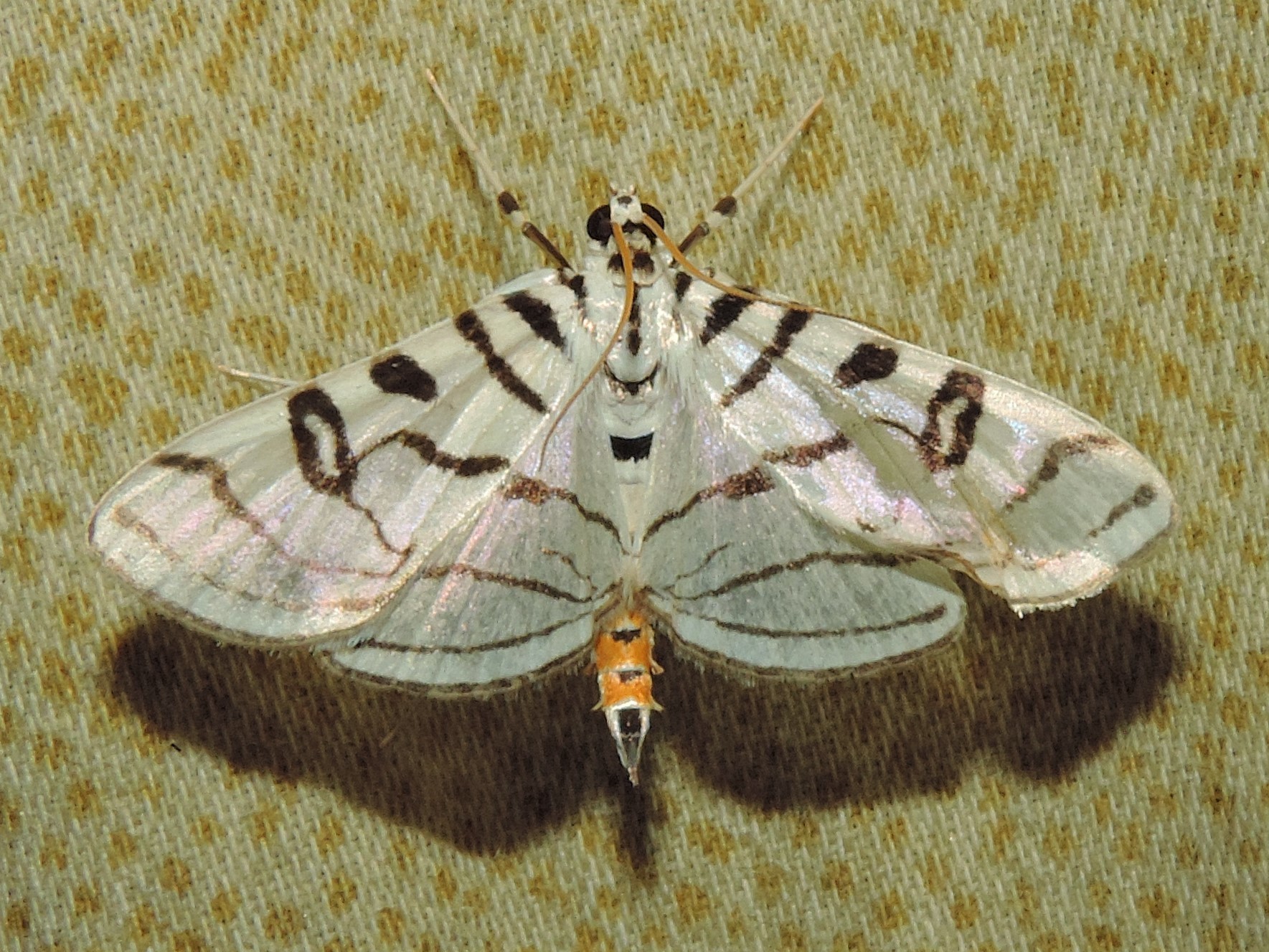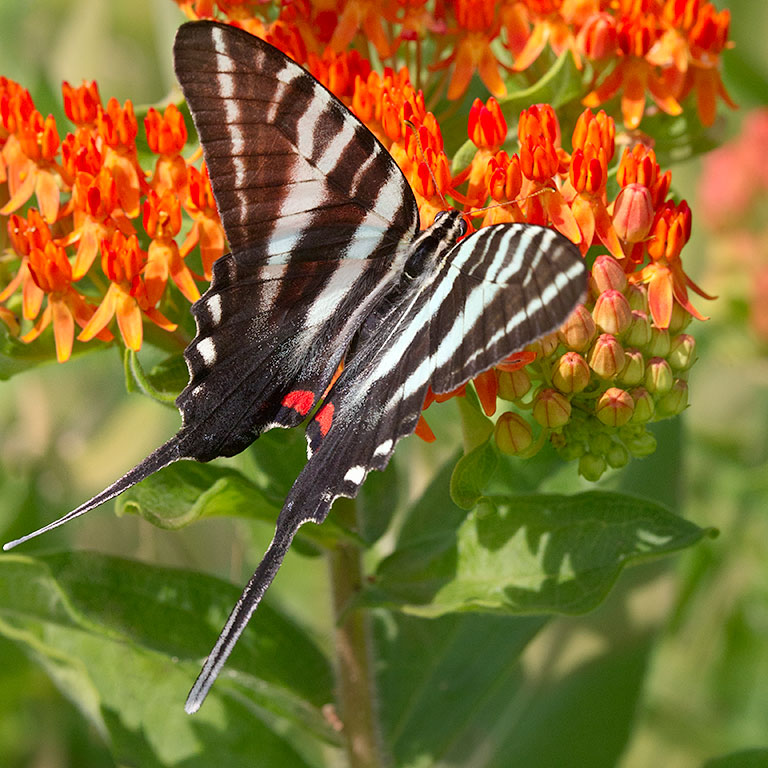

They are narrow and white with black centers. The long tail at the end of each hindwing is a common feature on most Swallowtails. The overall wing shape resembles a kite, and this butterfly is sometimes called just that: a Kite Swallowtail. These stripes are thicker in individuals born in the heat of the summer.

~ Sara Stein, Noah’s Garden: Restoring the Ecology of Our Own Back Yards, 1993, p.As part of its name suggests, the Zebra Swallowtail is white with black stripes. The more species there are, the less likely it is that any one of them will get out of hand and - just as true - the less likely that any one of them will suffer unduly. At summer’s end a moment of wild surpriseĭiversity of species is a form of safety in numbers - not numbers of individuals, but numbers of ways in which each individual’s prodigious reproductive power is modulated by conflicts of interest among all the individuals with which it shares the land.
#BAMONA ZEBRA SWALLOWTAIL FULL#
Occurs the last full week of July each year. The Caterpillar Lab – Shows stages of the caterpillar and the adult moth or butterfly. Caterpillars and their look-alikes – Heather Holm, author of Bees and other books. Restoring the Landscape with Native Plants:. Chicago Academy of Sciences Nature Museum:. General info that applies to many types of butterflies beyond Wisconsin Winter survival strategies of common Wisconsin butterflies Excellent!. A beginner’s guide to butterfly-watching. Butterflies and Moths: Busting the myths – telling moths and butterflies apart. 
Moth Photographers Group – includes photos of caterpillars, which is handy to have.VIDEO: Sex, Lies, and Butterflies – Fascinating info and beautiful videography!.
 PBS Nature: (If you don’t have a PBS Passport, your local library may have the DVD). Common butterflies of New England (good ID guide for CNY, too). Look at a moth and find a wonder that’s been waiting all along. Bees get the glory, but moths are also key pollinators. Gardening for butterflies – what works for monarchs, works for other butterflies, too!. – a remarkable website whose volunteers help ID all kinds of “bugs”. Butterflies and Moths of North America collects and shares data about Lepidoptera. Please don’t release butterflies at funerals, weddings, or other celebrations! Despite what butterfly “farmers” say, here’s the NABA view and those of other organizations. It’s not hard: Plants native to our region will likely be a good match for lepidoptera native to our region. Now I make sure the larval host plants I choose have a good chance of being used. When I first started habitat gardening, I just looked at lists of larval host plants without considering whether butterflies that use those plants might ever visit my yard. This is true for selecting larval host plants, too. No matter how much a butterfly I’m trying to identify in my yard looks somewhat like a butterfly that lives only in California, for example, it’s not likely to be that one. When I first started learning about butterflies, trying to identify the species, I’d just leaf through books trying to find a match.īut then I realized that most species can be eliminated if you look at their range. I won’t find this zebra swallowtail in my yard (though as the climate changes, who knows?) Generally spin a pad of silk then hang on the pad and form pupa Generally spin a pad of silk then hang on pad and form pupa Wings fold down over body so wing tops are visibleįront wings held at different angle to back wings Wings fold over body so undersides are visible Long thin with club tapering to pointed hooks at the tip Here are some key differences - though as always there are exceptions! (And it’s not surprising that I found this skipper since I grow its host plant: wild indigo!) What’s the difference between butterflies, moths, and skippers? I’ve discovered that many species I had previously thought of as butterflies are actually moths or skippers.įor example, a few years ago, I might have thought this pretty little creature was a butterfly, but it’s a wild indigo duskywing skipper! This section is about lepidoptera in general - not just butterflies, but also skippers and moths.
PBS Nature: (If you don’t have a PBS Passport, your local library may have the DVD). Common butterflies of New England (good ID guide for CNY, too). Look at a moth and find a wonder that’s been waiting all along. Bees get the glory, but moths are also key pollinators. Gardening for butterflies – what works for monarchs, works for other butterflies, too!. – a remarkable website whose volunteers help ID all kinds of “bugs”. Butterflies and Moths of North America collects and shares data about Lepidoptera. Please don’t release butterflies at funerals, weddings, or other celebrations! Despite what butterfly “farmers” say, here’s the NABA view and those of other organizations. It’s not hard: Plants native to our region will likely be a good match for lepidoptera native to our region. Now I make sure the larval host plants I choose have a good chance of being used. When I first started habitat gardening, I just looked at lists of larval host plants without considering whether butterflies that use those plants might ever visit my yard. This is true for selecting larval host plants, too. No matter how much a butterfly I’m trying to identify in my yard looks somewhat like a butterfly that lives only in California, for example, it’s not likely to be that one. When I first started learning about butterflies, trying to identify the species, I’d just leaf through books trying to find a match.īut then I realized that most species can be eliminated if you look at their range. I won’t find this zebra swallowtail in my yard (though as the climate changes, who knows?) Generally spin a pad of silk then hang on the pad and form pupa Generally spin a pad of silk then hang on pad and form pupa Wings fold down over body so wing tops are visibleįront wings held at different angle to back wings Wings fold over body so undersides are visible Long thin with club tapering to pointed hooks at the tip Here are some key differences - though as always there are exceptions! (And it’s not surprising that I found this skipper since I grow its host plant: wild indigo!) What’s the difference between butterflies, moths, and skippers? I’ve discovered that many species I had previously thought of as butterflies are actually moths or skippers.įor example, a few years ago, I might have thought this pretty little creature was a butterfly, but it’s a wild indigo duskywing skipper! This section is about lepidoptera in general - not just butterflies, but also skippers and moths.








 0 kommentar(er)
0 kommentar(er)
